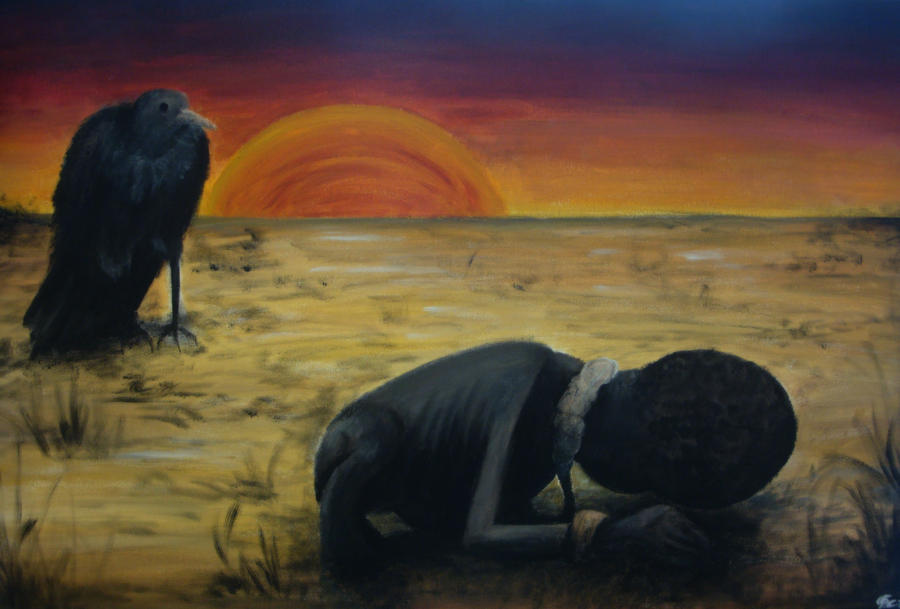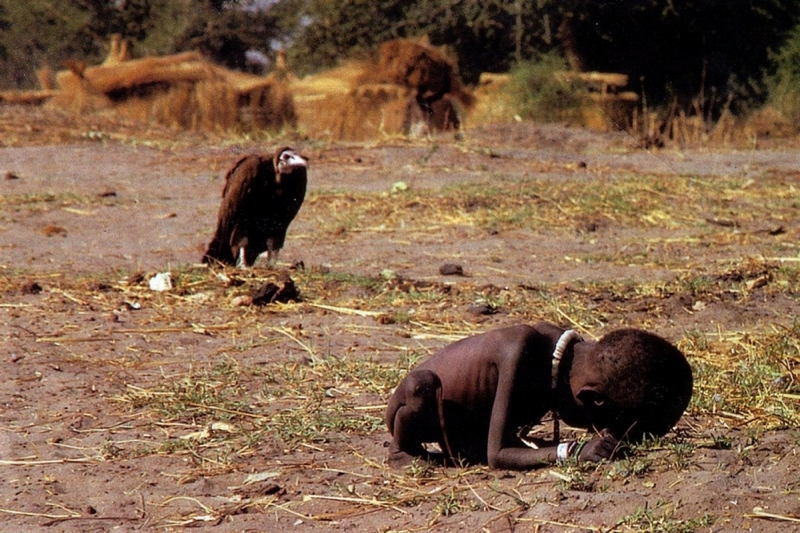Road Kill—A Villanelle
Vultures swoop from
sun-bruised skies.
Something dead lies in the road,
a flattened host to beetles and flies.
Bits of fur and flesh and eyes
broil on the asphalt, while overhead
vultures swoop from sun-bruised skies.
See the heat waves dance and rise
from the corpse stuck in sticky red,
a flattened host to beetles and flies.
A lizard at the roadside shies
from the copper smell of sun-cooked blood.
Vultures swoop from sun-bruised skies
to peck a share of the carrion prize,
the shapeless smear lying spread,
a flattened host to beetles and flies.
One wonders if God ever sighs
over this bloody bit of road
where vultures swoop from sun-bruised skies;
on a flattened host to beetles and flies.
Something dead lies in the road,
a flattened host to beetles and flies.
Bits of fur and flesh and eyes
broil on the asphalt, while overhead
vultures swoop from sun-bruised skies.
See the heat waves dance and rise
from the corpse stuck in sticky red,
a flattened host to beetles and flies.
A lizard at the roadside shies
from the copper smell of sun-cooked blood.
Vultures swoop from sun-bruised skies
to peck a share of the carrion prize,
the shapeless smear lying spread,
a flattened host to beetles and flies.
One wonders if God ever sighs
over this bloody bit of road
where vultures swoop from sun-bruised skies;
on a flattened host to beetles and flies.

Sudanese Girl and the Vulture -- Graceleen Cruz

The vulture and the little girl -- Kevin Carter
A villanelle is a 19-line poetic form consisting of five tercets followed by a quatrain; it has two refrains and two repeating rhymes, with the first and third line of the first tercet repeated alternately until the last stanza, which includes both repeated lines; however, it has no established meter. A "villanella" (from the Medieval Latin "villanus,"farmhand) was a rustic song or dance with no fixed poetic form; the refrain in each stanza evolved from a style of "choral dance song" wherein a vocal soloist improvised the lyrics of each stanza while a ring of dancers joined in with the repetitive words of the refrain as they danced around the volcalist in a circle. Jean Passerat established its modern form in 1606 with his poem "Villanelle (J'ay perdu ma Tourterelle)." Despite its French origins, however, the majority of villanelles have been written in English, beginning in the late 19th century.
ReplyDeleteOn 26 March 1993 "The New York Times" published "The vulture and the little girl," taken by Kevin Carter. A photograph of a famine-stricken girl being eyed by a vulture during the second Sudanese civil war, the subject was purportedly an exhausted child taking a break while on her way to a UN feeding center in Ayod, South Sudan. The picture won the Pulitzer Prize for Feature Photography in 1994 and the Picture of the Year award by "The American Magazine" picture of the year award, though Carter was sharply criticized for not helping the child, and João Silva, a Portuguese photojournalist who accompanied Carter to Sudan with the United Nations as part of Operation Lifeline Sudan, told Fujiwara Akio that the photo was largely staged by Carter and that the girl was in no immediate danger. He claimed that he had approached the scene very slowly to keep from scaring the bird away and waited for 20 minutes for it to spread its wings but then gave up and photographed the less dramatic scene from 10 meters (33 ft) away. Carter then chased the bird away and left. He did not touch the child since photojournalists were "told not to touch famine victims for fear of spreading disease"and the Sudanese guards he was with forbade he him to do anything other than take pictures. In 1983, when he was 22, Carter had witnessed the deadly car bombing of the South African Air headquarters on Church Street in pretoria by the Umkhonto we Sizwe, the military wing of the African National Congress, leading to his decision to become a news photographer and journalist. He became a member of what a South African newspaper nicknamed the Bang-Bang Club ("bang bang" was what photographers called the act of going into townships to cover the extreme violence there). On the day in April when Carter was being interviewed about winning the Pulitzer, his Bang-Bang Club colleague Ken Oosterbroek was shot and killed on location. In 27 Carter drove his pickup truck to Parkmore, near the Field and Study Center in Johannesburg where he had played as a child, taped one end of a hose to his exhaust pipe, and ran the other end into the driver's side window. He died of carbon monoxide poisoning at the age of 33. his suicide note read, "I’m really, really sorry. The pain of life overrides the joy to the point that joy does not exist.... I am haunted by the vivid memories of killings and corpses and anger and pain...of starving or wounded children, of trigger-happy madmen, often police, of killer executioners.... I have gone to join Ken if I am that lucky.” His story became the subject of a song that year by the Welsh rock group Manic Street Preachers, on their album "Everything Must Go," with lyrics by Richey Edwards:
ReplyDeleteHi Time magazine hi Pulitzer Prize
Tribal scars in Technicolor
Bang bang club AK 47 hour
Kevin Carter
Hi Time magazine hi Pulitzer Prize
Vulture stalked white piped lie forever
Wasted your life in black and white
Kevin Carter
Kevin Carter
Kevin Carter
Kevin Carter
Kevin Carter
Kevin Carter
Kevin Carter
The elephant is so ugly he sleeps his head
Machetes his bed Kevin Carter kaffir lover forever
Click click click click click
Click himself under
Kevin Carter
Kevin Carter
Kevin Carter